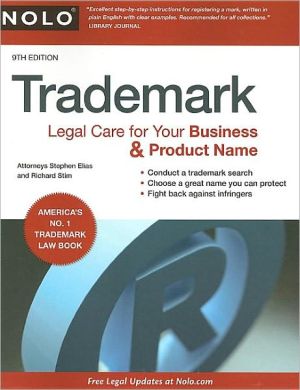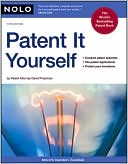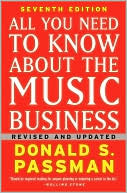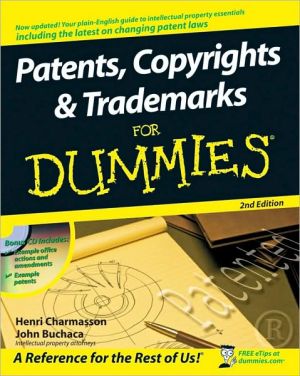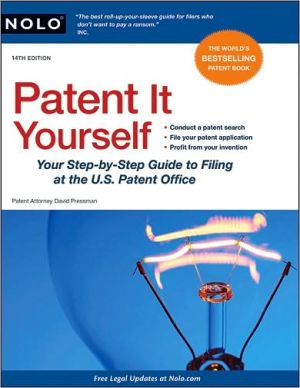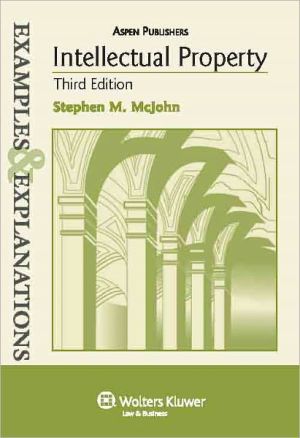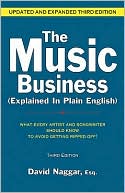Trademark: Legal Care for Your Business and Product Name
With the advent of the Internet, small business owners and innovators of every stripe need to be everwatchful when choosing and protecting their names, logos, packaging and slogans. Fortunately, there's help. Trademark explains, step by step, how to: choose a distinctive name that competitors can't copy, conduct a trademark search, register a trademark with the U.S. Patent and Trademark Office, protect and maintain a trademark, handle trademark disputes outside the courtroom, understand the...
Search in google:
Protect the marks that mean everything to your business.Trademarks -- the names and symbols that identify your business, brand and products in the marketplace -- are important assets that you need to choose carefully, then vigilantly defend. You can protect:business names product names product packaginglogos slogansv domain namesanything that identifies your company, product or service!With Trademark , you get the most up-to-date information you need to defend your creations. Learn how to:choose marks that competitors can't copy search for other marks that might conflict with yours register a name or other mark protect and maintain your marks' legal strength understand and resolve disputes outside the courtroomThoroughly updated, the 9th edition of Trademark provides the most current information on domain names, changes to trademark statutes and case law, and the latest registration processes. San Francisco Examiner Searching for a winning business or product name? Or have a distinctive logo or slogan to protect with a trademark or service mark? You will find sound advice in this book.
Introduction\ This chapter provides an introduction to the basics of trademark law. It will give you the background necessary to understand your rights and obligations in choosing and using a \ trademark to identify your business and products in the marketplace.Trademarks & Trademark Law\ What's in a name? To Shakespeare, "A rose by any other name would smell as sweet." But what is true in love can be the opposite in business. IBM would not smell half so sweet by another name, nor would Xerox, Apple Computer, McDonald's, or Levi-Strauss. In the business world, the name of a successful product or service contributes greatly to its real worth. Every day, names such as Allendale Auto Parts or Building Blocks Day Care identify these businesses for their customers, help customers find them, and (assuming they provide a good product or service) keep the customers coming back again and again.\ \ And it's not just a clever business or product name that pulls in the customers. Equally important in the vast U.S. consumer marketplace are the logos, packaging, innovative product shapes, cartoon characters, website address names (domain names), and unique product characteristics that businesses are using to hawk their wares. Even the look and feel of a business's site on the Internet -- widely known as a Web page -- are increasingly becoming \ important means for a business to identify itself and its products in the marketplace.\ \ All of these devices -- business and product names, logos, sounds, shapes, smells, colors, packaging -- carry one simple message to potential customers: Buy me because I come fromXYZ Company. To the extent that these devices are unusual enough to distinguish their underlying \ products and services from those offered by competitors, they all qualify as trademarks.\ \ If a small business owner were to remember only one point in this book, it should be this: The instant a business or product name or any other identifying device is used in the marketplace -- be it in advertising, on a label, on an Internet site, or in any other way intended to reach out to potential customers -- it falls within the reach of trademark law. Trademark law will determine who wins a dispute over the use of the name. Few business owners can afford to disregard or run afoul of this body of law.\ \ What Are Trademarks?\ \ Trademarks fall into two general categories: marks that identify goods or products (known as trademarks) and marks that identify services (known as service marks). Though you may occasionally see this distinction in action, these terms are, in fact, legally interchangeable, and the even more general term -- mark -- commonly is used to refer to both. In this book, we tilt towards the terms "trademark" and "mark" and seldom use "service mark."\ \ Technically speaking, a trademark is any word, design, slogan, sound, or symbol (including nonfunctional unique packaging) that serves to identify a specific product brand -- for instance, Xerox (a name for a brand of photocopiers), Just Do It (a slogan for a brand of sport shoes and sportswear), Apple's rainbow apple with a bite missing (a \ symbol for a brand of computers), the name Coca-Cola in red cursive lettering (a logo \ for a brand of soft drink).\ \ A service mark is any word, phrase, design, or symbol that operates to identify a specific brand of service -- for instance, McDonald's (a name for a brand of fast food service), Kinko's (a name for a brand of photocopying service), ACLU (a name for a brand of legal organization), Blockbuster (a name for a brand of video rental service), the U.S. Postal Service's eagle in profile (a symbol for a brand of package-delivery service), CBS's stylized eye in a circle (a symbol for a brand of television network service), the Olympic Games' multicolored interlocking circles (a symbol for a brand of international sporting event).\ \ In addition to trademarks and service marks, federal trademark law protects two other types of marks -- certification marks and collective marks. \ \ Certification marks are only used to certify that products and services that are manufactured or provided by others have certain qualities associated with the mark. For example, Good Housekeeping Seal of Approval (a product approved by a homemaking magazine), Roquefort (a cheese from a specific region in France), and Harris Tweeds (a special weave from a specific area in Scotland) are all certification marks. \ Among the characteristics that this type of mark may represent are regional origin, method of manufacture, product quality, and service accuracy.\ \ A collective mark is a symbol, label, word, phrase, or other distinguishing mark that signifies membership in an organization (a collective membership mark) or that identifies goods or services that originate from the member organization (a collective trademark). For example, the letters "ILGWU" on a shirt are a collective mark identifying the shirt as a product of members of the International Ladies Garment Workers Union. It distinguishes \ that shirt from those made by nonunion shops.\ \ Another example of a collective membership mark is the familiar FTD found in many flower shops. This mark means that the flower shop is part of a group that participates in a national flower delivery system. To belong to that group -- and thus obtain authorization to use the FTD mark -- the shop must pay steep membership fees and conform its practices to the rules set out by the group.\ \ Because a small business's need for collective or certification marks is relatively rare, we don't address them further in this book. If you need help in creating and protecting this type of mark, consult a trademark attorney. (See Chapter 14, Help Beyond This Book.)\ \ Although most small businesses rely on their business name as their primary trademark, there are many other ways for a business to inform consumers about itself, its services, and its products.\ \ Logos\ \ Next to a name, the most popular commercial identifier is the logo, a pure graphic or a combination of a graphic and some aspect of the business name. Examples abound. The block-lettered Ford set against a blue oval, the distinctive blue lettering used for IBM, the gold McDonald's arch, the universally recognized swirl used to denote Nike products, and the blue cross used to denote health care services all demonstrate how powerfully a logo can garner instant product or business recognition.\ \ Slogans\ \ Another popular form of trademark is the marketing slogan. "Obey your thirst" \ (Sprite); "It's everywhere you want to be" (Visa); "I love what you do for me" (Toyota); "Just Do It" (Nike); "Life is a sport, drink it up" (Gatorade), and "Life is a journey; enjoy the ride" (Nissan) are all devices designed to build customer recognition of the underlying businesses and their products, and therefore each qualifies as a trademark that deserves the same protection under trademark law as a business name.\ \ Packaging, Decor, Product Shape, and Web Pages\ \ In recent decades, a type of trademark known as trade dress has become more important to businesses trying to build customer recognition. Trade dress includes product packaging, external and internal store decor, product shapes, and perhaps the look and feel of a business's Web page. As long as the appearance of the product or its packaging operates as a trademark, it will be treated and protected as a trademark, assuming it meets other trademark \ requirements such as distinctiveness.\ \ Colors\ \ Colors help to distinguish products and services. A box of film that is gold and black \ connotes a Kodak product. A yellow arch indicates McDonald's food services. When color is used with a name or graphic design of a trademark (such as the red lettering and blue star of Converse footwear or the yellow and black coloring of the Cliff's Notes book series) it is registered as an element of the trademark.\ \ It was not until recently that the United States began to protect combinations of colors or single colors by themselves -- that is, without any additional text or graphics. In the 1980s, Owens-Corning registered the color pink for its fiberglass insulation and, in 1995, the Supreme Court ruled that a manufacturer of dry-cleaning press pads could claim registration for a green-gold color. (Qualitex v. Jacobson Products, 514 U.S. 159 (1995).)\ \ Also, a federal appeals court has ruled that a color combination (signifying different \ tensions in an exercise band) could be protected. (Fabrication Enters. v. Hygenic Corp., 64 F.3d 53 (2d Cir. 1995).)\ \ Colors may not be protected on the grounds that they are inherently distinctive. Rather, to obtain protection, the owner of a potential mark for color must establish that, given its use in the marketplace, consumers have come to associate the color with the owner's products or services, as indeed was the case with the Owens-Corning pink fiberglass and the green-gold color for the dry-cleaning pads.\ \ Internet Domain Names\ \ Internet domain names are the names assigned to Internet sites for the purpose of uniquely identifying the site and providing an intuitive way for potential visitors to locate it. (We discuss domain names separately in Chapter 2, Trademarks, Domain Names, and the Internet.)\ \ 'No' to Orange Flavor\ \ Flavors, like odors and colors, can be federally registered as a trademark. The challenge is to demonstrate that the flavor is identified with the source and is not functional. For \ example, the Trademark Trial and Appeals Board refused to permit federal registration of an orange flavor as a trademark for antidepressants. The Board stated that the orange flavor was functional and therefore incapable of serving as a trademark -- it is a preferred flavor for orally administered pharmaceuticals. (In re Organon N.V., 79 U.S.P.Q.2d 1639 (TTAB 2006).)\ \ What Is Trademark Law, and Why Do You Need to Know About It?\ \ In the real world, once customers come to associate a mark with a particular business or product, would-be competitors frequently copy some or all aspects of the mark -- its sound, its appearance, its meaning -- in an effort to lure customers away from the original business. Even well-intentioned business owners may violate trademark laws when they unwittingly pick a new business name, logo, or other type of trademark that conflicts in some way with a mark already in use somewhere in this large country of ours.\ \ For these and other reasons, the U.S. marketplace is rife with trademark conflicts. It is the job of trademark law to sort out these conflicts in an equitable and consistent manner. It is this book's job to introduce you, the reader, to how trademark law works, so that you will know how to avoid legal trouble when deciding how to identify your business and products in the marketplace and what to do if, despite your best efforts, you end up in a trademark \ conflict anyway.Basic Principles of Trademark Law\ Trademark law is the body of principles that the courts use to decide disputes regarding names or other devices being used to identify goods and services in the marketplace.\ \ Trademark law comes from many sources: federal and state trademark statutes, federal and state statutes defining and prohibiting "unfair competition" between businesses, and federal and state cases interpreting these laws. (Unfair competition refers to the legal rulings and statutes that protect against unethical business practices.) The federal law that governs trademark rights and registration is known as the Lanham Act. Although there are subtle differences in all these sources of law dealing with how businesses use commercial identifiers, federal trademark statutes and cases govern most trademark disputes. (Later in this chapter we provide more information on these sources of trademark law.)\ \ Here, briefly, are some basic concepts of federal trademark law that you will need to \ understand before we go any farther (we provide more details as we go along):\ \ \ \ \ The first business to use a trademark in the marketplace owns it as against later users.\ \ \ \ To qualify as a trademark, a name, logo, or other device used by a business in its marketing activities must either be: (1) unique enough to earn customer recognition on its\ own (referred to in trademark law as inherent distinctiveness) or (2) have earned customer recognition through its continued use over time (known in the trade as "acquired distinctiveness" or "secondary meaning").\ \ \ \ A trademark owner can sue in federal court to stop another business from using the same or similar trademark if the owner's mark is famous or the use by the other business would cause\ potential customers to confuse one business or product with another.\ \ \ \ The more distinctive a trademark is, the easier it is for its owner to get the court to stop its use by others.\ \ \ \ The usual court remedy in trademark disputes is to order the loser to stop further use of the trademark in question. This can be painful, because business goodwill often is intimately\ connected with the business's mark, and expensive because all of the items that carry the mark will have to be pulled from use.\ \ \ \ If the court finds that one business deliberately used a famous or distinctive mark belonging to another business, the offending business can be ordered to pay substantial money\ damages to the trademark owner.\ \ \ \ The court will usually find that a mark was deliberately copied if the mark was listed on the federal trademark Principal Register at the time it was copied.\ \ \
20 Frequently Asked Trademark Questions Introduction 1. A Trademark Primer 2. Trademarks, Domain Names and the Internet 3. How to Choose a Good Name for Your Business, Product or Service 4. Trademark Searches—What They Are and Why You Should Do One 5. How to Do Your Own Trademark Search 6. How to Evaluate the Results of Your Trademark Search 7. Federal Trademark Registration 8. How to Use and Care for Your Trademark 9. Evaluating Trademark Strength 10. Sorting Out Trademark Disputes 11. If Someone Infringes Your Mark 12. If Someone Claims That You Infringed Their Trademark 13. International Trademark Protection 14. Help Beyond This Book Appendixes A. Class Descriptions B. Glossary of Terms C. Trademark Search Report Index
\ Houston ChronicleGet tips to help you choose and protect a name, logo and other unique items that identify your company.\ \ \ \ \ San Francisco ExaminerSearching for a winning business or product name? Or have a distinctive logo or slogan to protect with a trademark or service mark? You will find sound advice in this book.\ \ \ Searching for a winning business or product name? Or have a distinctive logo or slogan to protect with a trademark or service mark? You will find sound advice in this book.\ \ \ \ \ [There is] no other text on the market to compare.\ \ \ \ \ [There is] no other text on the market to compare.\ \ \ \ \ Searching for a winning business or product name? Or have a distinctive logo or slogan to protect with a trademark or service mark? You will find sound advice in this book.\ \ \ \ \ Get tips to help you choose and protect a name, logo and other unique items that identify your company.\ \ \ \ \ A must-read for all start-up businesses.\ \ \ \ \ Get tips to help you choose and protect a name, logo and other unique items that identify your company.\ \ \ \ \ [There is] no other text on the market to compare.\ \ \ \ \ An excellent self-help book.\ \ \ \ \ Searching for a winning business or product name? Or have a distinctive logo or slogan to protect with a trademark or service mark? You will find sound advice in this book.\ \
